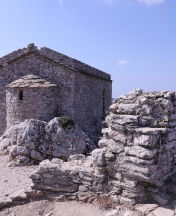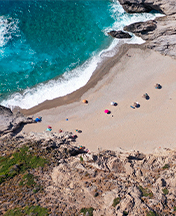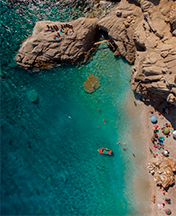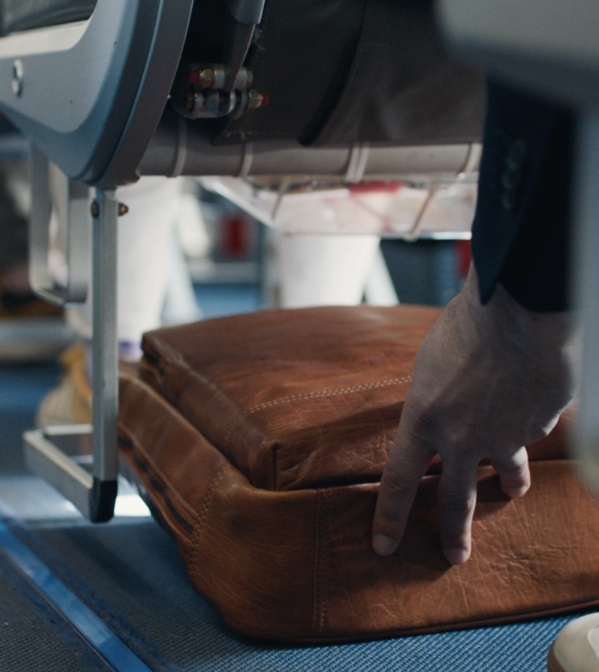According to ancient Greek mythology, Ikaria owes its name to Icarus, the son of Daedalus, who was the architect hired by Minos to build the famous Labyrinth of the Minotaur. Because Daedalus and Icarus were the only ones who knew how to escape the Labyrinth, Minos forbade them to leave Crete, in order to avoid the propagation of the Labyrinth's plans. Daedalus created wax feathers for him and his son to fly away from the island. Icarus, ignoring his father's advice, fled too close to the sun, because he believed he could be as strong as the gods and fly as high as they were. His extreme pride made him careless and he got very close to the sun, his wings melted and he fell in the deep sea that surrounds Ikaria, which then took his name. Archaeological findings show that the history of Ikaria begins in the 7th millennium BC, when it was first inhabited. In the 6th century BC, Ikaria was dependent on Samos, while after the Persian War it joined the Delian Alliance and began to flourish, with the Peloponnesian Wars stopping during this period of prosperity. In the 3rd century AD, Ikaria came under the control of the Byzantine Empire. After the fall of Byzantium in 1204, Ikaria came to Constantinople, then passed under the rule of the Knights of St.John and in 1521 when the island was conquered by the Turks. Ikaria participated in the Greek Revolution of 1821 and managed to break away from the Ottoman Empire in 1827. Finally, on November 4, 1912, he joined the rest of Greece.














